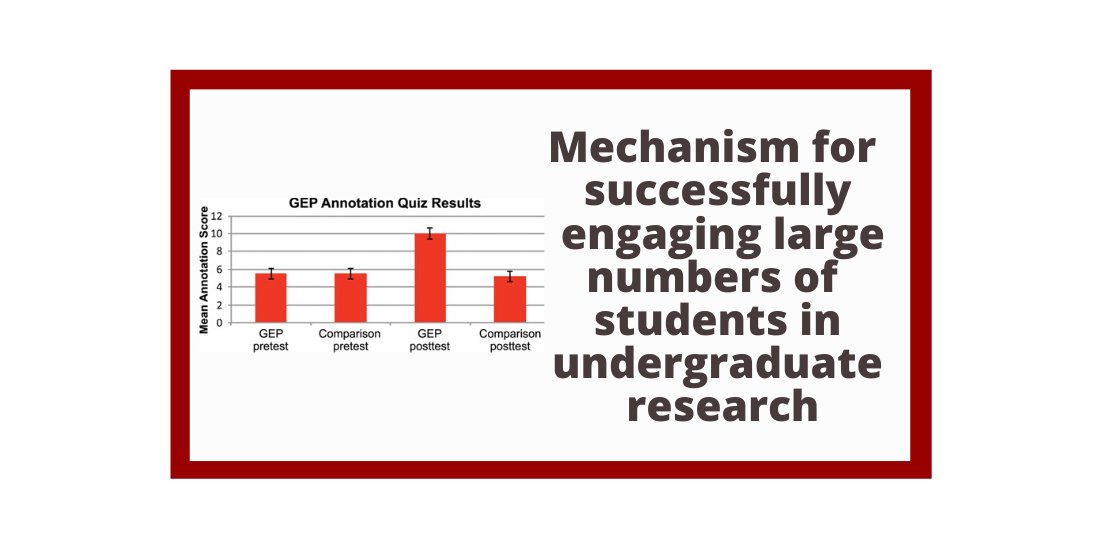Abstract: There is widespread agreement that science, technology, engineering, and mathematics programs should provide undergraduates with research experience. Practical issues and limited resources, however, make this a challenge. We have developed a bioinformatics project that provides a course-based research experience for students at a diverse group of schools and offers the opportunity to tailor this experience to local curriculum and institution-specific student needs. We assessed both attitude and knowledge gains, looking for insights into how students respond given this wide range of curricular and institutional variables. While different approaches all appear to result in learning gains, we find that a significant investment of course time is required to enable students to show gains commensurate to a summer research experience. An alumni survey revealed that time spent on a research project is also a significant factor in the value former students assign to the experience one or more years later. We conclude: 1) implementation of a bioinformatics project within the biology curriculum provides a mechanism for successfully engaging large numbers of students in undergraduate research; 2) benefits to students are achievable at a wide variety of academic institutions; and 3) successful implementation of course-based research experiences requires significant investment of instructional time for students to gain full benefit.

Shaffer CD, Alvarez CJ, Bednarski AE, et al. A Course-Based Research Experience: How Benefits Change with Increased Investment in Instructional Time. CBE Life Sci Educ. 2014;13(1):111‐130. doi:10.1187/cbe-13-08-0152

